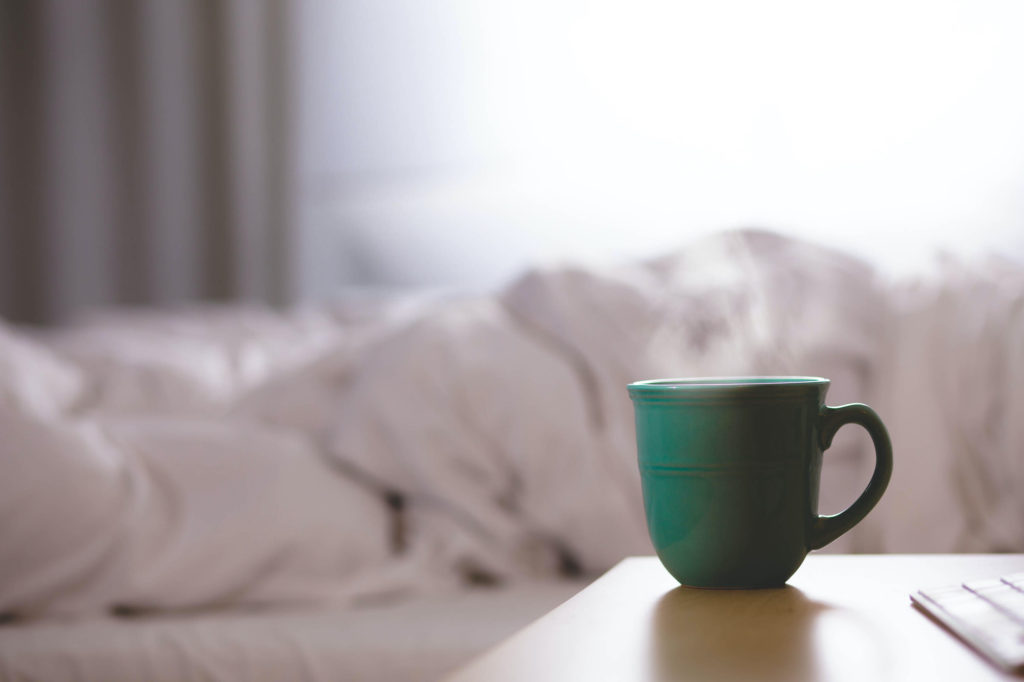Estimated Reading Time: 2 minutes, 47s.

Now that more of us are working from home, we have greater, let’s call it…flexibility with how we invest in our productivity. If this sounds like you, a coffee nap is something you should try.
Here’s how to take one:
- Drink a cup of coffee or another caffeinated beverage of your choice. My preference is either black coffee—without sugar or cream as they can interfere with energy and digestion—or a cup of black tea.
- Set a timer for 20-25 minutes. This length of nap is the sweet spot. It takes the average person seven minutes to fall asleep. On top of this, we feel groggy if we nap for around 30 minutes or more. We’re best rested and least groggy when we nap for 10 or 20 minutes. If you fall asleep easily, set a timer for 20 minutes, if it takes you a little longer, set a timer for 25.1
That’s pretty much it.
Caffeine naps work for several reasons, some of which are obvious, some of which are not. You get the calm restfulness that a nap provides (without sleeping long enough to feel groggy), and you also benefit from the energy jolt from the cup of coffee. Plus, given that the effects of caffeine don’t kick in immediately, you’ll wake up just as your body is absorbing it. This provides an even larger post-nap boost.
But there’s another curious reason why a coffee nap is so powerful, and it involves the brain chemical adenosine.
Put simply, adenosine is a neurochemical that makes you sleepy. The more adenosine in your brain, the groggier you feel. The chemical accumulates throughout the day, which makes us more tired as the hours drag on. Caffeine tricks our brain’s adenosine receptors—our brain can’t distinguish between caffeine and adenosine. This is the method through which caffeine functions: it fools your brain into absorbing it instead of adenosine. Though caffeine is a stimulant, in this way it’s not stimulating our brain so much as it is convincing it that we’re less tired than we are. The more our brain receptors bind to caffeine in place of adenosine, the more energized we feel.
Sleeping clears adenosine from our brain. This means caffeine has the potential to bind to more receptors. (Once adenosine has bound with an adenosine receptor, caffeine can’t take its place—the adenosine will remain in place until enough rest clears it out.) By clearing the adenosine and replacing it with caffeine, you experience an even greater caffeine boost without having to consume more of it. Curiously, this is why caffeine doesn’t work as well on days where you’re already super tired. 2
We’re all wired differently, so an article like this is never a universal truth. Your mileage will vary with this advice: while some of us can easily nap, others may toss and turn for the entire 25 minute session. Some of us quickly absorb caffeine and feel jittery after half a cup, others need to consume two mugs before we begin to feel its effects.
Coffee naps are worth a shot, regardless of your sensitivity to caffeine and naps—taking one might just make you feel more rested, energized, and productive.
